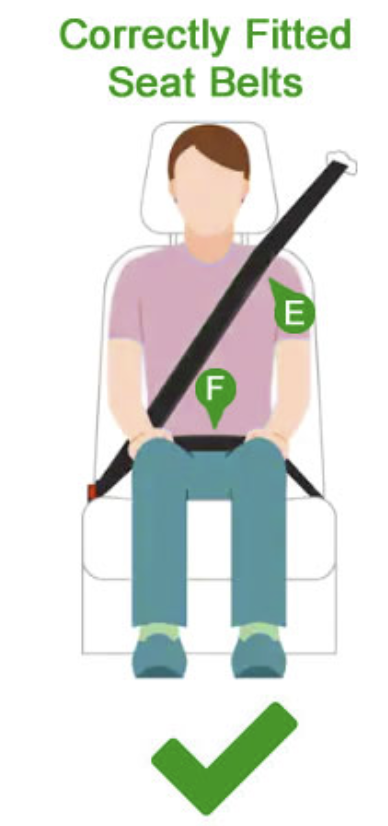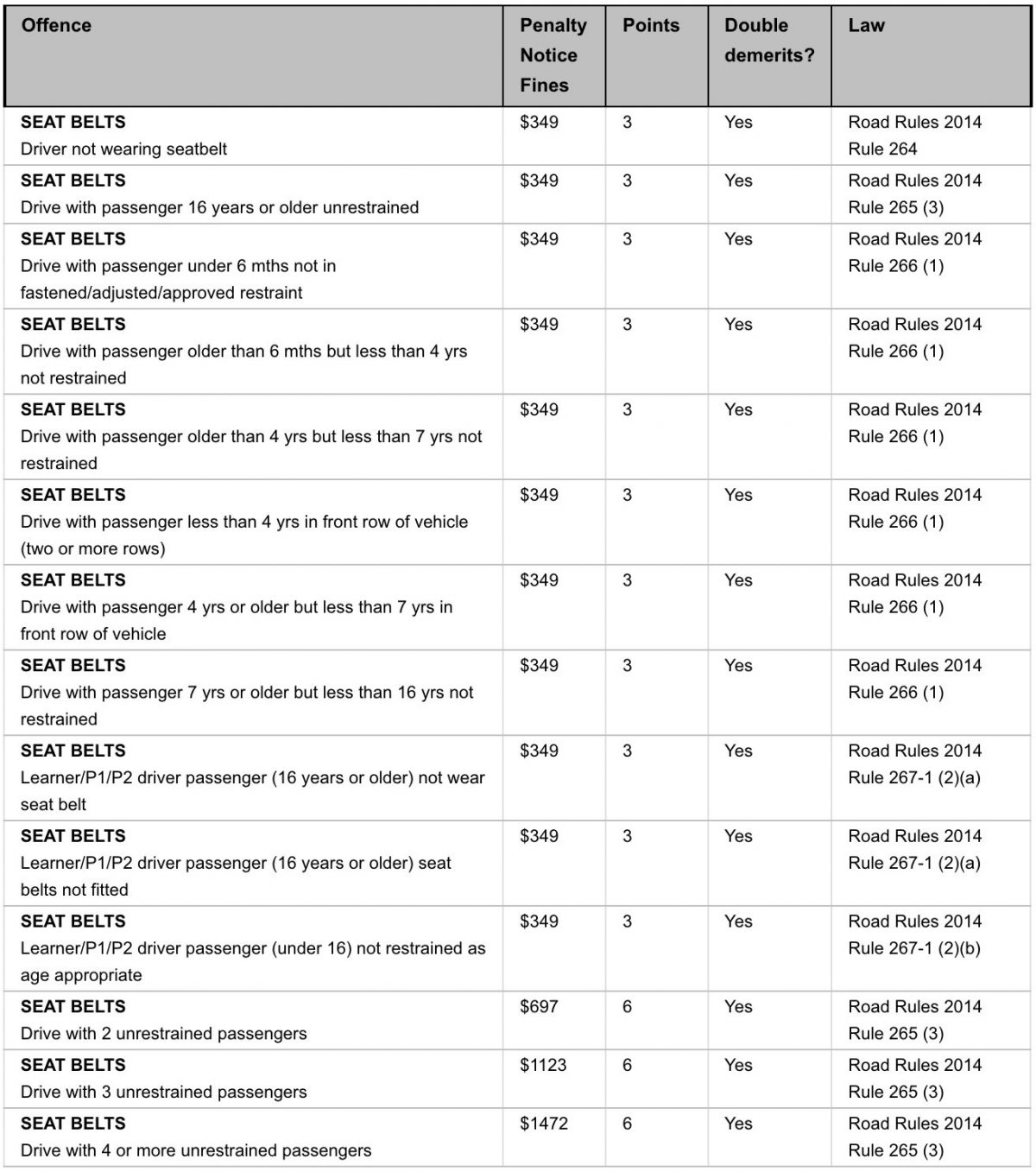Failure to wear a seat belt is one of the leading causes of road crash death for crash-involved vehicle occupants. Each year around 40 people are killed on NSW roads because they’re not wearing a seatbelt, and around 350 people are injured. These deaths and injuries can be prevented by wearing a seatbelt properly. It’s a simple action that could save your life.
Studies show that drivers & front-seat passengers are at a much greater risk of fatality in a car crash if the rear passengers are not wearing seat belts
The five main functions of a seat belt are to?
1. Cause the occupant to decelerate at the same rate as the vehicle in a crash
2. Spread the force of the impact over the stronger parts of the occupant’s body (pelvis and chest area)
3. Prevent the occupant colliding with the interior parts of the vehicle and other vehicle occupants
4. Reduce the risk of being thrown from the vehicle.
5. In modern cars, seat belts are designed to work together with airbags. In a crash, the seat belt slows the speed of the occupant so they impact safely with the airbag.
Drivers must wear a seatbelt while driving. Drivers must not have any part of their body outside the vehicle. Drivers are also responsible for making sure:
- each passenger is sitting in their own seat that’s fitted with a seatbelt (they must not share the seat or seatbelt with another passenger)
- each passenger is wearing a properly secured and adjusted seatbelt or is in an approved child car seat suitable for their age and size
- there are no more passengers in the vehicle than it’s designed to carry
- no-one travels in an area of the vehicle not designed for passengers, for example, in the boot, on the floor, in the tray of a ute, or in a trailer or caravan
- passengers do not travel with any part of their body outside the vehicle.
It’s also the responsibility of passengers aged over 16 to:
-
- sit in their own seat and wear a properly secured and adjusted seatbelt
- not travel in an area of the vehicle not designed for passengers
- not have any part of their body outside the vehicle.
How to wear your seatbelt properly? 
During a crash, wearing a seatbelt slows your body down and puts the crash forces on the stronger parts of your body (pelvis and chest area). For a seatbelt to work, you should adjust it ‘low, flat, and firm’
-
-
- low – placed below your hips to fully secure your body weight
- flat – no twists, turns, or folds
- firm – regularly pull the belt firm to remove any slack.
-
Penalties for not wearing a seatbelt
If you drive while not wearing a seatbelt, or fail to make sure that your passengers are wearing a seatbelt, you will get a fine and demerit points. Double demerit points also apply. In addition to the driver, passengers aged over 16 will get a fine for not wearing a seatbelt. They can also get a fine for traveling with any part of their body outside the vehicle. See Reference
Seat belts are devices that have been proven to save lives. For your own safety and the safety of your passengers, you should enforce a rule in your vehicle that every occupant wears their seat belt at all times.



